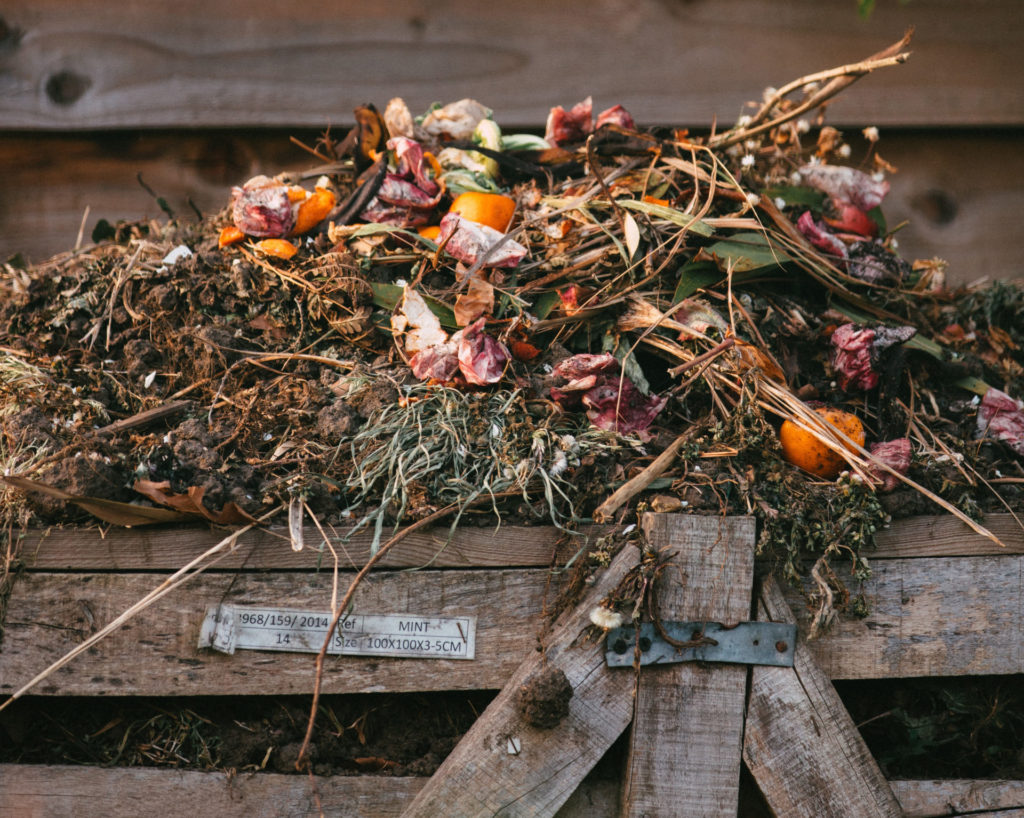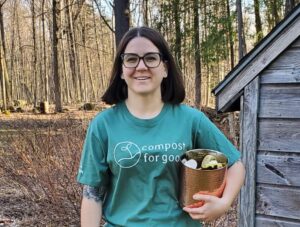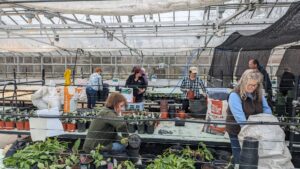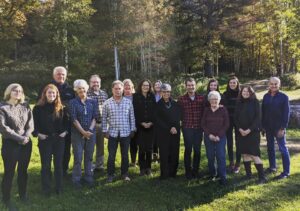By John Culpepper, Katie Culpepper, and Jennifer Perry, project leads, AdkAction Compost for Good
The Adirondack Park is rooted in the idea that it is critical to preserve wilderness and conserve natural resources, while also allowing people to live and recreate within the boundaries of this rugged landscape. The forest preserve itself was originally created with the intent of limiting logging practices in the northern reaches of the state which were destroying water supplies downstream. The imperative to balance pressures to protect the region with the needs of the Park’s residential population has been contentious and challenging throughout its existence.
For a long time, communities in the Adirondacks dealt with solid waste by burying that waste in landfills beneath mountains of soil. Due to increasing environmental concerns associated with landfills, the last remaining landfill within the park was closed over two decades ago. With no active landfills, all of the organic waste generated within the Blue Line is hauled away to locations outside of the Park. While this serves to protect our beautiful Adirondack lands, it puts increased pressure on distant communities and increases the miles that waste has to travel. Typically, landfills have a lifespan of 30-50 years, meaning that before long, new land must be found to create new landfills. Many of our older landfills are creating environmental problems as caustic or poisonous compounds leach out into water systems. Furthermore, when buried, food scraps and other organic material create a significant amount of methane—a powerful greenhouse gas.
According to the Regional Office of Sustainable Tourism approximately 137,000 people live year-round in the Park and another 200,000 people have second homes here. Additionally, 7-10 million people visit the Park annually. Numbers around food waste are hard to pin down precisely, but the average person in the US throws out approximately 1 pound of food waste per day. Not surprisingly, the total amount of food waste from grocery stores, farms, processors, and restaurants is many times more than that. Any way that you figure it, the food waste being generated within the Adirondack Park is significant.
Food and other organic waste accounts for nearly 50% of the mass of solid waste. As such, by segregating the food waste before it enters the solid waste stream, we could cut the material destined for landfills in half. Through decomposition (composting), that food and other organic waste can be converted into a valuable soil amendment.
With the Adirondack Compost for Good project, we are working to help communities find sustainable approaches to dealing with their food waste. We want to shift the perception away from thinking of unused food as waste, to instead helping people realize that food waste is actually a valuable resource.
What if, rather than hauling food scraps and other organic waste away for other communities to deal with, we captured the valuable plant nutrients and organic matter found within that food waste, and create a high value product, and keep that value within the Blue Line? By doing so, we would build our soils, keep money in the local economy, create jobs, reduce the production of methane gas, and reduce our reliance on commercial fertilizers. The widespread adoption of composting in the Park would contribute to the preservation of our mountains, streams and forests and to the resilience of our communities.
Here are some ways you can begin to rethink food waste at home and in your community:
- Without changing your habits, track your household food waste for a week –how much is being composted, how much is going into the trash?
- Check with your local school district, grocery store, or your favorite restaurant to find out how they approach food waste. If they are not currently composting, do they have plans to start?
Learn more about:
- At-home composting
- Composting in bear country
- Commercial and residential composting services in the Adirondack region: Blue Line Compost in Saranac Lake and Adirondack Worm Farm in Hudson Falls
- Food Waste Reduction and Diversion Reimbursement Program. This program helps offset the cost of composting through reimbursements to NYS businesses, municipalities, or not-for-profits that generate large amounts of food waste.
- To find out more about Adirondack Compost for Good, check out our project page or reach out to us at [email protected].





